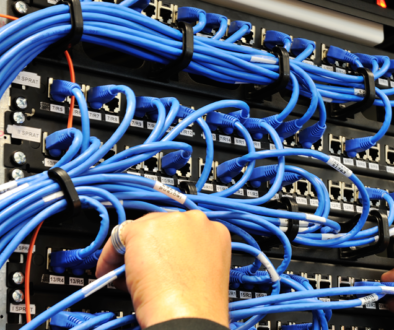What is Fiber Optics – Definition, Meaning &
Explanation
Have you ever wondered what fiber optics are or how they work? If so, you’re in luck! This blog post will explore the basics of fiber and how they relate to telecommunications. You’ll learn the definition of fiber optics and its meaning and explanation. We’ll also discuss the various applications of fiber and its importance in today’s world. So if you want to brush up on your knowledge of fiber, keep reading!
What is fiber optics?
Fiber optics is the science of transmitting information using light that is transmitted through thin, transparent fibers. It is also used in endoscopes and other medical devices. “fiber ” typically refers to the technology used to transmit light signals over long distances through optical fibers.
Fiber optics is the science of transmitting information using light that is transmitted through optical fibers. Optical fibers are fragile glass or plastic threads used to guide light. They are so thin that they can only be seen using a microscope.
The advantage of using fiber is that it can carry much more information than traditional copper wire and is also less expensive. Fiber optics are used in many applications, including long-distance telephone lines, cable television, and the Internet.
How does fiber optics work?
Fiber optics is the technology that uses thin, flexible fibers made of glass or other transparent materials to transmit light signals over long distances. The light signals can carry data, which makes fiber an essential part of today’s high-speed Internet and computer networks.
Light travels in straight lines. But it can also be bent or refracted when it passes through certain materials, like water or glass. When light hits the surface of a glass fiber at an angle, some of the light waves are reflected off the surface while others pass into the fiber. Once inside the fiber, the waves bounce off the walls and keep moving forward. This process is called total internal reflection.
Because the waves are constantly bouncing off the walls of the fiber, they can travel for long distances without losing much intensity (or power). Fiber optic cables can carry signals over long distances without amplification.
What are the benefits of fiber optics?
Fiber optics is a technology that uses glass or plastic threads to transmit data. It is often used in telecommunications, networking, and computer hardware.
The main advantage of fiber over other data transmission methods is that it can carry much more data over longer distances at higher speeds. Fiber optic cables are also much thinner and lighter than metal wires, making them easier to install and work with.
What are the disadvantages of fiber optics?
Fiber optics have a few disadvantages compared to other data transmission forms. One such disadvantage is that fiber cables are much more delicate than other cables and are more susceptible to damage. Additionally, fiber cables are more expensive to install and maintain than other cables. Finally, fiber technology is still relatively new; thus, more trained personnel must install and maintain fiber optic systems properly.
What are the applications of fiber optics?
In fiber optics, light is transmitted through fragile optical fibers. The word “fiber” refers to the tiny core inside the glass or plastic cladding that surrounds it. The cladding keeps the light confined within the core by reflecting it in.
Fiber optics has applications in many different industries and fields, including:
• Telecommunications: Optical fiber is used to carry telephone signals, Internet data, and cable television signals. It can also be used for long-distance data transmission, such as between cities or across countries.
• Medicine: Fiber is used in endoscopes and other medical imaging devices. It can also be used to deliver light into hard-to-reach places in the body, such as during surgery.
• Engineering: Fiber optics can be used for measurement and inspection in various settings, such as manufacturing plants or construction sites. It can also be used in environmental monitoring applications.
• Lighting: Fiber optic lighting systems are becoming increasingly popular due to their energy efficiency and long lifespan. They are often used in architectural applications, such as accent or landscape lighting.
Conclusion
Fiber optics is a fantastic technology revolutionizing how we communicate and access information. It allows us to transmit data faster than ever before while using less energy, making it a cost-effective choice for many applications. Its versatile nature makes it suitable for various industries, from internet service providers to medical research facilities. As more businesses and institutions embrace this technology, its importance will continue to grow.
Related posts:



